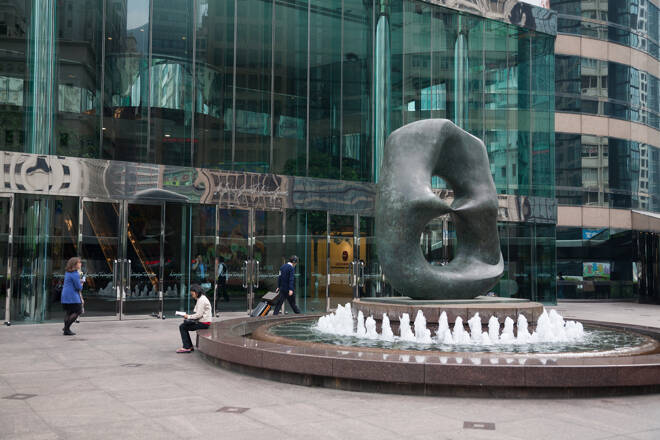Advertisement
Advertisement
Hang Seng Index, ASX 200, Nikkei 225: US Jobs Report Sets the Tone for Asian Markets
By:
Market concerns: Bank of Japan pivot, Chinese economy, and Fed rate path remain focal points for the Hang Seng Index and the broader market.
Highlights
- On Friday, the Nikkei tumbled due to bets on a Bank of Japan pivot, with the Hang Seng Index also closing the session in the red.
- The US Jobs Report and gains across the US equity markets will offer early support to the Monday session.
- China stimulus discussions and the Bank of Japan will be the focal points on Monday.
Overview of the Friday Session
On Friday, the Asian equity markets had a mixed session. The Nikkei 225 and Hang Seng Index ended the day in negative territory. However, the ASX200 wrapped up the week on a positive footing.
US equity market gains from Thursday offered the ASX 200 support. On Thursday, the Dow and S&P 500 rose by 0.17% and 0.80%, respectively. The Nasdaq Composite Index rallied 1.37%. 10-year US Treasury yields climbed by 1.10% to 4.151%.
However, the market bets on a Bank of Japan pivot from negative rates, and the likely impact on the Yen sank the Nikkei. Concerns over the Chinese economy and the Fed rate path left the Hang Seng in negative territory.
Economic indicators from Japan contributed to the Nikkei losses. Wage growth accelerated in October, a key consideration for the Bank of Japan and a pivot from negative rates. Investors appeared less concerned with a continued decline in household spending and a more marked Q3 economic contraction. Weak numbers failed to pour cold water on BoJ pivot bets.
US Jobs Report and US Equity Markets to Set the Tone
On Monday, the US Jobs Report from Friday and the performance of US equity markets will set the tone for the Asian session. A hotter-than-expected US Jobs Report eased bets on a March Fed rate cut and supported recent Powell comments about rate cut discussions. However, better-than-expected consumer sentiment and softer consumer inflation expectations comforted the US equity markets.
On Friday, the Nasdaq Composite Index and the S&P 500 gained 0.45% and 0.41%, respectively. The Dow ended the day up 0.36%. 10-year US Treasury yields jumped 1.88% to 4.229%.
While the gains in the US equity markets will provide direction, the Asian economic calendar needs consideration. From Japan, the BSI Large Manufacturing Index warrants investor attention. Economists forecast the Index to increase by 1.1% in Q4 vs. a 5.4% gain in the previous quarter.
Beyond the numbers, China stimulus chatter, Bank of Japan commentary, and government bond yields need monitoring.
ASX 200
The ASX 200 ended the Friday session up 0.30%. Mining, oil, and bank stocks contributed to the gains. Gold and tech stocks capped the upside.
BHP Group Ltd (BHP) and Rio Tinto Ltd. (RIO) saw gains of 0.67% and 0.88%. Fortescue Metals Group Ltd. (FMG) rose by 1.06%.
National Australia Bank Ltd. (NAB) and ANZ Group Holdings Ltd (ANZ) ended the day up 0.03% and 0.04%. Commonwealth Bank of Australia (CBA) and Westpac Banking Corp. (WBC) gained 0.16% and 0.05%, respectively.
Oil stocks had a mixed session. Woodside Energy Group Ltd (WDS) declined by 0.53%, while Santos Ltd (STO) rallied 6.15%. News of Woodside and Santos entering merger talks drove buyer demand.
However, gold (XAU/USD) stocks ended the session in negative territory. Northern Star Resources Ltd. (NST) and Evolution Mining Ltd. (EVN) declined by 1.37% and 0.63%. The S&P ASX All Technology Index (XTX) fell by 0.39%.
Hang Seng Index
The Hang Seng Index slipped by 0.07% on Friday.
Alibaba (9988) gained 1.15%, while Tencent (0700) fell by 0.71%
Bank stocks also had a mixed session. HSBC (0005) rose by 0.25%. However, China Construction Bank (0939) and Industrial Commercial Bank (1398) declined by 0.22% and 0.27%.
The Nikkei 225
(Graph for reference purposes only)
The Nikkei 225 tumbled by 1.68% on Friday.
Bank stocks made gains for the third session. Sumitomo Mitsui Financial Group Inc. (8316) and Mitsubishi UFJ Financial Group Inc. (8306) ended the day up 0.15% and 0.24%. It was another negative session for the main components of the Nikkei.
Fast Retailing Co. Ltd. (9983) slid by 2.90%. Sony Group Corp. (6758) and KDDI Corp. (9433) declined by 1.12% and 1.84%. Tokyo Electron Ltd. (8035) and Softbank Group Corp. (9948) ended the session down 0.87% and 0.70%.
For upcoming economic events, check out our economic calendar.
About the Author
Bob Masonauthor
With over 28 years of experience in the financial industry, Bob has worked with various global rating agencies and multinational banks. Currently he is covering currencies, commodities, alternative asset classes and global equities, focusing mostly on European and Asian markets.
Advertisement
